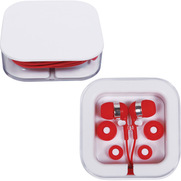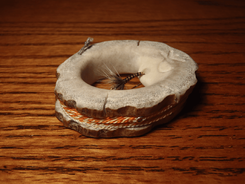|
When I first started writing this blog post over a month ago it was still fair weather fishing. I wanted to look at all the ways I could reduce my gear in hand. I wanted to make the management and handling of line, flies and leader efficient. Along the way I found a lot of great options. So many as a matter of fact that I have had to break this topic down over three blog posts to make it more manageable. At the core of my efforts is the pursuit of the simplest set up. I wanted a way to carry just the gear needed and have a reasonable sling bag to carry my day’s food and a few survival and minor comfort essentials. Overall it was a very enjoyable process. I tried to remain honest with myself about my actual needs. Of course these needs can change over time and with each specific trip. It is better to plan ahead. In researching hacks I found some to be less than ideal and actually causing more issues than they solve. Some things pretend to be hacks and fall short of being a solution at all. By loose definition a hack should be practical, solve a problem, be fairly easy to make and accomplish the job intend as well (if not better) than the thing it is replacing. Hacks are great because they let us look at things and use them in unconventional ways. . Some of the ideas I came up with did cross over onto each other and some were stand-alone ideas. I have always enjoyed life hacks and small D.I.Y. projects and these ideas fall somewhere in those categories. I am sure that you too will find your own ideas and I hope that you will share them with all of the other readers either in the comment section of this blog or on the Tenkara Path Facebook page. I continue to look at approaching tenkara fly fishing with the idea that getting in to the areas and fishing with least amount of gear in tow is the ideal approach. I can move quicker and cover more fishing area and holes which of course leads arguably to more chances to catch fish. The Power of Reduction and Combination One thing that tenkara has taught me is to keep reducing things to a simpler and simpler form. Understanding that utility and necessity trump gimmick, newest model and hype. Reductions should be a benefit that removes the use of bulkier solutions and yet still obtain the same effect. Finding items that can serve two or more solutions as one item are almost always better than carrying individual items that have only one function. . Keep the Essentials I’ve continued to use a small nipper and carry a hemostat clipped to my shirt. My fly box and lines now fit nicely into a shirt pocket or two at the most. When I take a net with me I just tuck it into my belt at the small of my back. Net options will have to wait for another day. I’ve been working on finding the best way to manage my leader, flies and tippet. I want to keep everything easy to access and easy to put away. I have found that there is very little reason to have a fishing bag other than to carry my lunch, a rain jacket, maybe an extra rod, a phone and/or a camera. I’ve probably gone overboard in my search and found a variety of items that work well as solutions. I hope that at least one of the ideas that follow seem like something useful to you. You may not know until you try it out yourself and give it a field test. Each hack has some advantages and disadvantages. I try to cover these with each description. Lets Talk First About Spools. A spool of course allows you to manage your line when you are not using it. There are certainly very nice wooden, foam or even plastic spools that have been created specifically for line management. But this article is about DIY and hacks… So I started looking at spools I could find that were being used for something other than tenkara lines. I like a lot of the commercial spools but I really like how personalized that a hack or DIY can be. One thing I have wanted is a spools that could double as a fly box. I have listed a few of those with the ideas below.  Ear bud cases Early on I repurposed some ear bud cases as spools. These worked okay in that I could put the hook in a chamber and then using the winder feature of the case to wind the tippet and line onto the spool. There was even a little room in the case for a few more flies to be stored. Downside was that these cases are each different. Sure you could find one that worked but I have a couple lines and don’t really need that many sets of ear buds. Purchasing a product just for a component is again not a bad or good thing.  Antler spool Photo courtesy of Jason Klass TenkaraTalk.com Antler spool Photo courtesy of Jason Klass TenkaraTalk.com Handmade spools Pieces of wood and chunks of bone have been fashioned into spools for fishing line long before there were fishing rods. I have looked at cutting out a flat “H” shaped spool for keeping my line on. I know that there have been traditional spools of this kind used by the Japanese forefathers of tenkara as well. One ongoing issue in doing this with modern day lines is that your line can form a memory on the bends and will need to be stretched out each time it is unwound. If you like this more primitive design I am sure one could be whittled out of a nice piece of found wood or your next trip out. There are a lot of beautiful wooden spools on the market too but making one yourself is rewarding and personalizes it.
 Backpacking Salt and Pepper bottle I found this salt and pepper bottle at a backpacking store and probably spent too much on it. It has two twist-off caps that open and can hold a few flies on each side. You can actually wind a couple of spools of line on this one. It is small and fits in a pocket easily. The container is clear as well so you can see how many flies you have or what style of fly is kept in what side of the container. Keep and eye out for these at garage sales and thrift stores.
The irony is not lost on me that I have covered so many ways to minimize your spool here that it is far from minimalist to use all of these. I would suggest that you look at them and decide for yourself what works best for you and go with that. In Part TWO of this series I will talk about rod mounted line tenders. I have fallen in love with them and continually look for materials to make them for all of my rods. I will tell more about that later. Until then I hope that you will explore these spool options and share any others that you find in the comments below.
4 Comments
1/10/2016 01:22:33 pm
Very comprehensive post Dennis with some really creative ideas for line carriers. I especially like the slap wrist one. Looking forward to the rest of the series!
Reply
Don
1/18/2016 09:25:00 am
Dennis,
Reply
HI Don,
Reply
11/28/2019 07:36:01 pm
The difference in the prices of a thread of the same characteristics; For example, the same power and manufacturing material, in this case nylon, is a key factor that will determine the frequency with which we must change the bobbin thread
Reply
Leave a Reply. |
